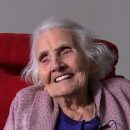ALLFIE: ALLFIE part three
More from
ALLFIE
ALLFIE the main themes. Part 3 of 3
Transcript
The main themes which probably haven’t been a surprise have been, the sense of isolation. Whether that’s being, if you’re a disabled young person who was sent away at a very young age from your family to some kind of residential special school, but also within the school itself the not being included, the not feeling welcomed, the not feeling supported in your learning, relationships with family, if you’ve been sent away, but also if you’re still at home. The way the system. . . whether it’s conscious or subconsciously creating divides between the disabled person and our families, or our communities. I think the lack of aspiration for our potential. The focus being on, somehow fixing their impairment, this normalisation process. I mean none of which was a surprise for us. I guess, for me, the surprise maybe has been just how consistent those messages have been, right across, if we’re talking a hundred years, this is like the last century.I suppose I felt really passionately that, these were voices that nobody was hearing. You know people talked about segregation and they talked about isolation, they talked about being institutionalised, all of these things but we never really heard from people themselves. And politicians were making all kinds of decisions about people’s lives, life was evolving with that voice being missing. So, I think I just felt it was time, it was time that people really got to tell those, often very, very painful stories. I really want people to be able to listen to those extremely painful stories, but I also want them to feel that things are moving on, attitudes, cultures are changing. And I think that we have seen that, we have seen that, in the different stories that we’ve been told. Certainly within the school culture you get the sense that things have really shifted, in terms of disabled peoples identity, young people’s identity. How they feel in the classroom, how other children in the classroom feel about them. I can see that it would be a useful way to see where the lessons were, what really didn’t work and what did work, something’s did work and even in the period of integration there are really important things we can learn from that. That’s the time really, the kind of what did work, didn’t work time I suppose. And still, even today, inclusion’s not perfect so we have good examples and bad examples and that’s all useful. Well so the idea is that we use the evidence, the stories, some of the photos to build a resource pack for schools really to map the experience of education for disabled people over the last hundred years.
It’s an invisible history, there’s nothing currently in the national curriculum for disabled and non disabled students to understand our history or our culture.
There’s a really important thing about disabled people themselves telling their stories, narrating their lived experiences. I think that’s really crucial and that must be listened to. And I think that this provides a platform for people to listen to that. Whether researchers and policy makers will then take the steps to listen to that is really crucial because, what is in the face of all this is the dominance of professional viewpoints about, what disabled people should be like. So there’s that, the lasting impact is there is an opportunity for people to listen to disabled people in a significant way.
Explore more
Explore stories by theme or view the timeline of significant events in education for disabled people
![How Was School? [logo]](https://howwasschool.allfie.org.uk/wp-content/themes/hws-base-theme/assets/img/allfie-logo-original.svg)



